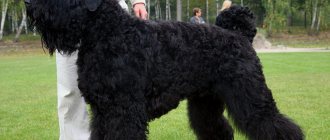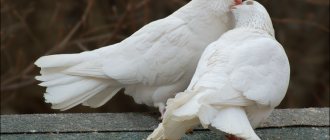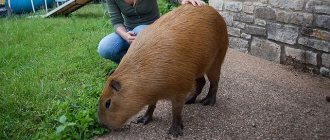Hamsters belong to the subfamily of rodents, order Hamsters. There are about 400 species in total. Most of them live only in nature and are not suitable for home keeping. At home they contain only 5-8 species.
Hamsters are quite easy to keep at home. They do not require much care and are easy to tame. They rarely show aggression and bite. One of the disadvantages of keeping hamsters is their low life expectancy. Hamsters rarely reach the 5 year mark, the average duration is only 2-3 years and depends on the breed of hamster. There are only 5 most popular species for keeping at home.
Breeds of hamsters for home keeping:
- Dzungarian.
- Syrian.
- Angora
- Campbell.
- Roborovsky.
Albinos are also born among hamsters. Albinos can occur among any species, as well as among any other animals.
Breeds of hamsters, their differences and which types are best for the home
What types of hamsters are there?
How to distinguish them from each other? What types of hamsters are suitable for keeping at home? You will find answers to these questions in the article. Let’s make a reservation right away that we will only talk about varieties of hamsters that can be tamed and domesticated. Let's take a quick look at wild rodents.
If you don’t understand breeds, this will grow up.
Roborovsky
Roborovsky are the unique smallest individuals of dwarf hamsters. Adults grow to four to five centimeters. They have long legs and, unlike other hamster breeds, do not have stripes on their spine. Their character is quite active. These are nimble and independent rodents. They cannot sit in one place. It is impossible for Roborovsky to run out of the cage. Then it is very difficult to catch him.
Solitary confinement is not suitable for this species, since rodents are very sad and do not live out their “hamster life” for long. In nature, they live in small communities. The Roborovsky hamster should live in a group or in pairs. Being in a group, these mini-hamsters feel great, and watching their life in a cage becomes even more interesting.
Dzungarian (aka Sungur)
Yes, this is not a typo - the Dzungarian hamster and the Sungur hamster are the same breed. In common people, the pet is called a dzhungarik after the name of the region in China, its natural habitat. Sungurik - from the scientific name Phodopus sungorus.
Other erroneous names for dwarf hamsters are Siberian hamster and Russian dwarf. Such breeds of pets do not exist in the classification; if they are trying to sell you a Siberian or Russian at an inflated price, find another seller.
Sungursky is a dwarf species, grows up to 10 cm in length and gains a weight of 45-65 grams. The “feet” on the paws are covered with hair. The color on the back is dark, on the belly it is almost white. A characteristic difference is a clearly defined thin dark stripe along the ridge.
The “standard” back color is brown or dark gray. But there are decorative colors:
- Sapphire (gray with a bluish tint);
- Pearl (snow-white);
- Tangerine (similar in color to the golden Syrian).
The Dzhungarik changes its coat color depending on the time of year (lighter in winter), but this rarely happens at home.
The character is perhaps the friendliest among all hamsters. Djungarians often like to be stroked on their backs and bellies; they willingly fall asleep in your arms.
Lives in captivity for an average of 3 years, but with proper care, 4 are possible.
You can house opposite-sex pairs (just keep in mind that they will reproduce quickly and actively). It is better not to keep same-sex Dzungarians together; they do not get along well.
The tiny size leaves an imprint on the maintenance and feeding of the baby. Read about care in detail in this material.
Endocrine pathologies, gastrointestinal diseases
Endocrine disorders, metabolic failures, hormonal imbalances, and disruptions in the digestive tract in most cases are provoked by improper feeding of a small pet. Metabolic disorders can also be hereditary.
Among the most common endocrine pathologies in hamsters are:
- diabetes;
- obesity;
- vascular diseases;
- stone disease;
- polycystic ovary syndrome (in females).
Hormonal imbalances in females most often cause frequent childbirth and an unbalanced diet. Hamsters become lethargic or, on the contrary, irritable. The pet's tummy is swollen and the frequency of bowel movements is disrupted. Treatment is surgical.
Gastrointestinal diseases (poisoning, enteritis, food allergies) develop due to a violation of the feeding regime, if the hamster has a poor-quality, meager diet or due to exposure to various toxins on the body. The diseases are accompanied by unstable stools, rumbling in the stomach, decreased appetite, and lethargy. A veterinarian will tell you how to cure a hamster and what to do if the digestive processes are disrupted, having established an accurate diagnosis and cause.
Obesity in a hamster
Syrian
The second most popular species is the Syrian hamster. This species is medium-sized and much larger: the body length is considered to be 12 cm, but there are individuals up to 20 cm tall (this is the largest hamster among pets). The usual color is golden (reddish, peach). Often, for marketing purposes, sellers call this breed Royal, and the name Yellow Hamster is found. Many consider it the most beautiful breed.
There are simply countless decorative colors obtained as a result of selection. The Syrian can be of almost any color, as well as multi-colored.
The character is a little more absurd than that of the Djungarians, but you can tame the Syrian. Females are angrier than males, so we recommend boys for solitary housing. If you are planning to get several Syrian animals, house them separately, even in pairs (only house them for the duration of mating).
They live 3-4 years; long-livers have been known to live up to 5 years.
We have outlined everything you need to know about the maintenance and nutrition of the Syrian breed in this article.
Angora hamster
There is no breed of Angora hamster. This is often the name given to Syrians who are extremely shaggy and have long hair (up to 10 cm). Decorative breed, famous for its fluffiness. The coat requires additional care - keep this in mind if you are planning to get a shaggy hamster.
Golden hamster
Naturally colored Syrians are most often called golden, but there are also representatives of other breeds of this color (for example, tangerine dzhungarik).
Prevention
Preventive measures cannot fully guarantee protection against cancer and other diseases, but the risk of disease is reduced many times over. To protect your cute animal, follow these rules:
- Clean the cage and wash it often, this will reduce the population of pathogens.
- Do not allow rodents to mate frequently if you have a married couple living with you. Remember that childbirth significantly undermines the body's defenses.
- Do not feed animals fatty foods.
- Take care of your animal's immunity. Fresh herbs and vegetables are great for this purpose.
Following these recommendations will have a good effect on the mood and health of the furry, prevent the occurrence of infectious diseases, and reduce the risk of tumors.
At the first symptoms of the disease, you should not self-medicate, but run to the doctor. Timely diagnosis and therapy will help cope with a number of diseases, but if your furry friend is diagnosed with cancer, you will have to come to terms with it.
Campbell's hamster
Another representative of the dwarf breed. It is very similar to the Djungarian, both in size and color, so it is not easy to recognize the breed. The main differences between Campbell and Dzungarian:
- The color has a golden tint, while the Djungarian has a darker coat.
- When viewed from above, the shape resembles a figure eight, while the jungarik has an oval
- The stripe on the back is less distinct
The signs are not exact, so we advise you to read the material on our website, which covers in detail the question of how to determine the breed of hamster (to distinguish a hamster from a Campbell).
Life is shorter than that of the Dzungarian breed, on average 2 years in captivity.
Albino hamster with red or black eyes
And again we have to disappoint you - there is no separate breed of albinos with a specific eye color. Almost any living creature (even humans) can be born an albino.
Usually hamsters have black eyes, but albinos often have impaired eye pigmentation (this is the color on the inner surface of the eyeball). As a result, it becomes transparent and the red color we see is blood vessels.
An albino with any eye color is no different in caring for an ordinary animal of the same breed.
Failure to study the main signs and symptoms of diseases
It is imperative to know the symptoms of certain diseases. After all, prevention is the best treatment. A timely visit to the veterinarian can save your pet and help avoid many problems.
It is worth paying attention to changes in the behavior of your furry pet. Reasons for concern may include:
- excessive activity and lack of sleep;
- lethargy;
- lack of appetite;
- sadness.
If you find this, be sure to contact a specialist.
Other breeds of hamsters
Let's take a look at the representatives of hamsters that are not recommended to be kept at home. You need to know about them, at least so that they don’t slip you a wild animal under the guise of a domestic, soft and fluffy pet.
Hamster Radde
The very prolific Radde hamster is a wild pest that can gain 1 kg of weight with a length of up to 28-30 cm. Appearance: the main brown color is combined with light inserts on the abdomen and face.
Eversmann's hamster
Eversmann's hamster, which lives mainly in Mongolia, has an average height of 15 cm and a short tail (up to 2 cm). The predominant color is a brown back with a light belly with a dark spot on the chest. There is a variety of Eversmann's hamster - Mongolian. Differences from the first:
- Mongolian is a little less
- The color is lighter (closer to gray)
- No spot on chest
Chinese hamster
The Chinese hamster lives, as the name implies, in the former Celestial Empire. A small (10 cm) brown animal with a dark stripe along the ridge. Very similar to a mouse, the bare tail adds to the similarity.
Hamster Sokolov
Even scientists know little about Sokolov’s hamster. It lives in Mongolia and China, reaching a length of slightly more than 10 cm. The skin on the back is gray with a dark stripe, the belly is light.
Barabinsky hamster
The Barabinsky hamster is native to Western Siberia and Mongolia. Grows up to 13 cm. Color – light brown, sometimes reddish, with a stripe on the back. The belly is lighter, sometimes even white. An interesting feature is the two-color ears (with a white border at the edges).
The Daurian hamster is a variety of the Barabinsky breed. It is distinguished by a darker color and a clearly defined spinal stripe.
Newton's hamster
Similar to the Syrian, both in shape and size (grows up to 17 cm). The fur on the back is gray-brown, the muzzle and chest are reddish. Unlike the Syrian breed, the character is vicious.
Short-tailed hamster
The short-tailed rodent is a high-mountainous inhabitant, the main habitat is Tibet. Grows up to 8-10 cm. Color is a mixture of gray, yellow and brown.
Long-tailed hamster
The animal is 9-12 cm long, dark gray in color, and comes from Transbaikalia. The long-tailed hamster is very similar to a common field mouse (tail length up to 5 cm).
Do you know any other breeds of domestic hamsters?
If we have overlooked a breed suitable for keeping at home, write in the comments and we will add it. And subscribe to us on social networks - there will be a lot of interesting things!
Source
Breeds of domestic hamsters
Hamsters are gray and white, smooth-haired and fluffy, calm and active. It all depends on their origin, so what are the differences between the breeds of domestic hamsters and which one is better to get?
Djungarian hamster
This breed is very interesting - small but nimble hamsters that will definitely not leave you indifferent. Djungarians can range from a completely snow-white fur coat to a dark, intricate pattern on the back. As a rule, males are much larger than females.
Adult Djungarian hamster
The maximum height is 10 cm, but girls are rarely larger than 6 cm. And the average weight of an adult animal is 50 g. The historical homeland is the steppes of Altai, Kazakhstan, Mongolia, China and even Siberia. In the wild, they construct and live in small burrows. They love to bathe in the sand; this procedure helps keep their fur clean.
Djungarian hamsters are known for their fertility; one litter can have up to 12 babies. By nature, these are fast, elusive hamsters. Can become tame if handled properly.
Syrian hamster
It has many names: golden, royal, Western Asian, Angora.
Black and white hamster - what breed?
Hamsters can be of different colors and patterns. In order to achieve the ideal white or black color, breeders must breed the same 2 ideal black or white hamsters. Usually this color can be found in Djungarian and Syrian hamsters. Under natural conditions, such rodents can be found in the steppes of Siberia, Kazakhstan and the mountains of Dagestan.
Also, albino white hamsters are not a separate breed. They can be of almost any breed.
Answers to popular questions
Before getting their first hamster, people ask many questions. We have collected the most popular of them and will try to provide brief information.
What breed of hamster is best to buy for a child?
Several factors need to be taken into account: the age of the child, how many hamsters you plan to buy, whether you can look after him and devote a lot of time.
Let's say the only hamsters that can respond to a name are Syrian ones. Djungarians live only one at a time. Campbell's are more social, they need a friend so they don't get bored.
Hamster and baby
Males of any hamsters, as a rule, are larger than females, but more “fragrant” because they mark their territory, i.e. You need to clean the cage more often. Are you and your child ready for this? You should not completely entrust the maintenance of the animal to the child; be sure to control the processes.
What is the largest breed of hamster?
The largest hamster is the Karbysh breed. Its dimensions reach 35 cm and weight up to 700 g. It lives only in the wild and cannot be tamed. Among domestic hamsters, the largest is the Syrian.
Keep a male and a female in the same cage if you do not plan to have babies
Some inexperienced owners buy a pair at once - a female and a male, believing that they will have much more fun together.
However, one should not rush to conclusions. If you put a boy and a girl in the same cage, then one day they will make you happy with offspring. And it will not be one or a couple of small animals, but at least a dozen at once.
If you are not ready to breed these rodents, then it is better to purchase one. Hamsters themselves are not social animals; they do well without company, in splendid isolation. And so that they don’t get bored, you can place various wheels, labyrinths and hammocks. Nowadays you can find a wide selection of products in the pet store.
How to determine the breed of a hamster: algorithm
You need to rely on several points. These are: body length and color.
- Up to 5 cm, white belly and beige-brown back - Roborovsky's hamster.
- Up to 10 cm, with a predominance of gray color, with a black stripe on the back - jungarik.
- About 15 cm and a small tail, golden, uniform in color - Syrian hamster.
- Within 14-15 cm, the abdomen with legs is white, and the back is dark, then this is a Campbell's hamster.
These are the most common breeds to keep at home. If you need to determine the breed of small hamsters, then you should look at their parents, if possible, or focus on color.
Features of care
The long-haired Syrian hamster needs careful care; its fur needs to be combed and any tangled debris removed. The main thing here is not to overdo it; bathing your baby in water is contraindicated - he may catch a cold. The baby himself will take care of the cleanliness of his “hair”. Install a sand bath in the cage so your pet can bathe and clean itself.
Cage and accessories
To make your baby comfortable, buy a cage measuring 50x30 centimeters. A good option is a dwelling with transverse rods. The cage must have a wheel with a diameter of at least 20 cm. This also applies to the house; it must be larger than for short-haired babies. Angora hamsters are very fond of all kinds of labyrinths and pipes, so you can buy a small-diameter multi-story dwelling for them. It’s good if the floors are connected by pipes, stairs or other loopholes.
Filler
The maintenance of “shaggy” dogs is practically no different from their short-haired counterparts, but they have long hair, which excludes shavings as bedding - they get tangled in the wool. For “shaggy” ones, wood pellets are suitable as a filler.
Angora hamster fur care
The home environment that you lovingly create will please the Angora. There is nothing complicated in caring for an animal, there is one “but” - long hair. Remember, she looks beautiful only if she is well-groomed, otherwise the baby will turn into a sloppy creature.
The fur is shaggy and needs to be combed to remove debris and tangled particles. You can use a toothbrush as a comb. It would be a good idea to purchase cleaning powder for long-haired hamsters. It is important to ensure that the wool becomes less dirty.
Feeding the Angora
The Angora hamster is unpretentious in feeding; it is suitable for the same diet as other domesticated rodents, the main thing is to feed it on time with high-quality food. If the baby does not have enough vitamins and minerals, the “hair” may look patchy and unkempt. Therefore, in order for the fluffy Syrian hamster to look beautiful, do not skimp on food.
Diet
Under natural conditions, hamsters use dry plants to build nests and feed on succulent ones, so do not exclude greens from the diet. As for fruits, they happily eat bananas, pears, and apples. Vegetables: carrots, zucchini, eggplant. They also need protein foods. What should you feed your Angora hamster besides store-bought food and treats? To ensure that he receives a full set of vitamins, once a week give him boiled yolk, breast milk, low-fat cottage cheese or kefir.
You need to make sure that your shaggy hamster eats only fresh food.
Periodically check to see if your baby has brought leftover food into the house - he may be poisoned by sour foods.
Favorite products:
- oats;
- corn;
- millet;
- flax seeds;
- green grass;
- dried fruits;
- nuts.
Prohibited Products
You should not give treats that contain dyes, preservatives, or harmful additives. Potatoes, citrus fruits, garlic and onions are strictly contraindicated for representatives of this breed, as well as:
- salty;
- sweet;
- exotic fruits, as well as watermelon;
- honey;
- almond;
- sorrel;
- canned food, smoked meats, pickled foods.
If you give your baby a piece of watermelon or a salted nut, he will not die. But problems with the gastrointestinal tract may begin. And why take the risk? These animals don’t live long anyway.
Duration and lifestyle
The Angora hamster does not need a roommate, so if you have purchased several fluffies, make sure that each has its own cage. If several individuals live in one dwelling, be prepared for serious fights.
Remember: Angora hamsters are territorial animals!
Angora hamsters can live up to 3 years at home. There are cases where representatives of this breed lived longer, up to 3-4 years, but only with good care. There is a world record holder who lived for 7 years.
In order for the baby to live as long as possible, you need not only to take good care of it, but also to choose the right pet. Examine his fur carefully; it should grow evenly, even on the pads of his feet, and be clean in the anus area. The eyes should be radiant and the nose should be dry.











